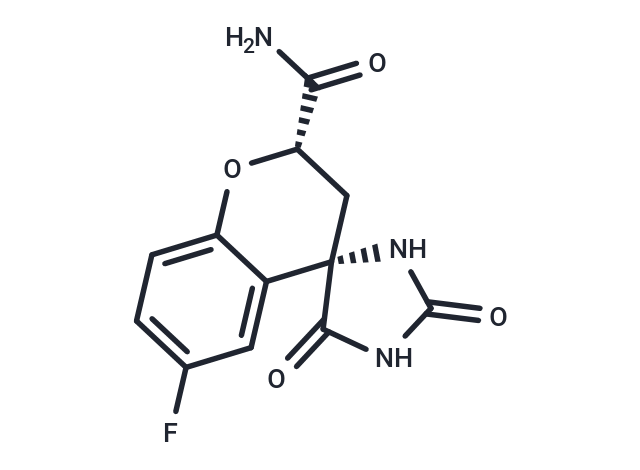Shopping Cart
- Remove All
 Your shopping cart is currently empty
Your shopping cart is currently empty

Fidarestat is an aldose reductase inhibitor (IC50s: 26 nM, 33 μM, and 1.8 μM for aldose reductase, AKR1B10, and V301L AKR1B10, respectively). It has the potential to treat diabetic disease.

| Pack Size | Price | Availability | Quantity |
|---|---|---|---|
| 1 mg | $84 | 35 days | |
| 5 mg | $249 | 35 days | |
| 10 mg | $407 | 35 days |
| Description | Fidarestat is an aldose reductase inhibitor (IC50s: 26 nM, 33 μM, and 1.8 μM for aldose reductase, AKR1B10, and V301L AKR1B10, respectively). It has the potential to treat diabetic disease. |
| Targets&IC50 | AKR1B10 (V301L):1.8 μM, AKR1B10:33 μM, Aldose reductase:26 nM |
| In vivo | Fidarestat (1 or 4 mg/kg. p.o., daily for 4 weeks) decreases the concentrations of sorbitol and fructose in diabetic rats [2]. |
| Alias | SNK 860 |
| Molecular Weight | 279.22 |
| Formula | C12H10FN3O4 |
| Cas No. | 136087-85-9 |
| Relative Density. | 1.61 g/cm3 (Predicted) |
| Storage | Powder: -20°C for 3 years | In solvent: -80°C for 1 year | Shipping with blue ice. | |||||||||||||||||||||||||||||||||||
| Solubility Information | DMSO: 250 mg/mL (895.35 mM), Sonication is recommended. | |||||||||||||||||||||||||||||||||||
Solution Preparation Table | ||||||||||||||||||||||||||||||||||||
DMSO
| ||||||||||||||||||||||||||||||||||||

Copyright © 2015-2025 TargetMol Chemicals Inc. All Rights Reserved.